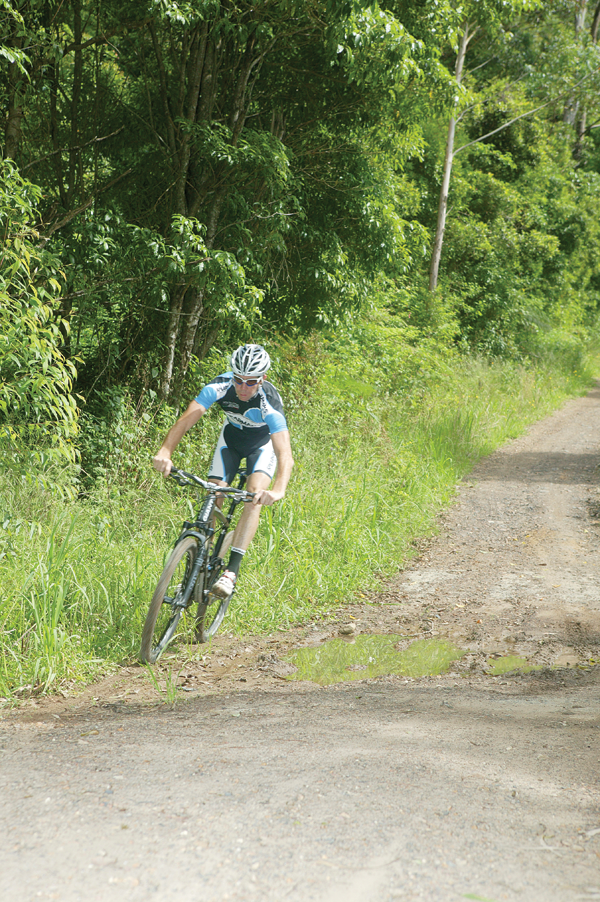How To Corner at Speed
 Entering a turn at speed on a skatey and unpredictable surface can be intimidating but as with most things in mountain biking, the correct technique and good line selection will see you through.
Entering a turn at speed on a skatey and unpredictable surface can be intimidating but as with most things in mountain biking, the correct technique and good line selection will see you through.
Line Selection
On flat or off-camber corners, it’s usually best to enter wide and stay wide until the second half of the turn, then pull in tight towards the apex. Cut in tight too early and you’re more likely to run out of trail on the exit. This ‘late apex’ technique is the safest option (especially on unfamiliar ground), as it leaves you with some trail in reserve if the turn hooks around more than you expect.

Step 1
Do the majority of your braking before you get to the corner—you can brake more effectively and with better control when going in a straight line. While it may seem counterintuitive, it’s usually faster to enter a corner slow, turn smoothly, and then let it run on the exit. Go in too hot and you’ll be forced to brake mid-corner which makes it harder to maintain control—smoothness is the key! Your weight transfers forward as you brake; this makes your front brake far more effective while unweighting your rear wheel. Apply around 75-80% of your braking effort through your front wheel and shift your weight back to maintain control and stop the rear tyre skidding. Brake with your pedals level (three and nine o’clock) and drop your heels to lower your centre of gravity if you really need to haul on the anchors. Hover above the saddle keeping your arms and legs relaxed to absorb the bumps.

Step 2
Look ahead and through the corner to gauge how tight it is and avoid any rocks or sizeable ruts. Back off the brakes and centre your weight between the front and rear wheels. Tip the bike into the turn by extending your inside arm until it is almost straight, whilst simultaneously bending your outside arm and allowing the handlebar to come up to you. At the same time, drop your outside pedal so the cranks are at six and twelve o’clock.

Step 3
Lean the bike more than your body and drive your weight through the outside pedal. Weighting the outside pedal will drive the tyres into the trail and really increases their bite. Leaning the bike more than your body also provides a bit of a safety buffer; if you do lose traction mid-turn, quickly pulling the bike upright will save you. Continue to look through the corner and hook in tight to the apex in the latter half of the turn.
Step 4
As you sight the exit you should be able to let it run and start pedalling again. Apexing late allows you to hit the gas earlier, or make it through unscathed if the turn continues to swing around. Use as much runout as you need to on the exit to accelerate back up to speed, or set yourself up for the next turn. If you do overcook the corner by entering too fast, hit the rear brake in an effort to swing the bike around and wash off some speed in the process.
Fast Footing
You may find it helpful to take your inside foot off the pedal through the turn. This will lend confidence, as if you do slide out, you will be able to dab your foot and catch your fall. When cornering with your foot out, make sure you still drive your weight through the outside pedal to maximise traction. This technique works best for riders who use flat pedals, as clipless users can find it difficult to get back onto the pedals on the exit of the corner.







